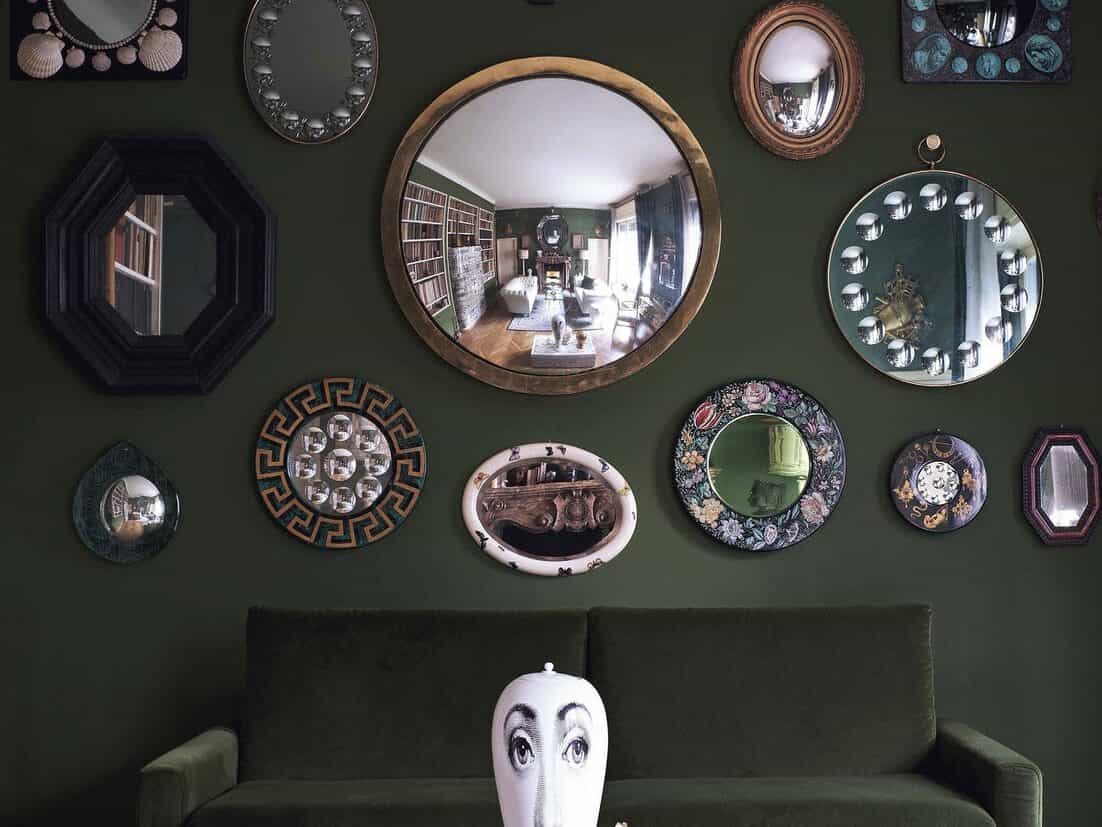In recent times, the allure of retro styles has made a significant comeback in the realm of home design. As homeowners seek to blend past eras with modern sensibilities, nostalgia has become a key driver in shaping aesthetic choices. This resurgence is not about replicating history but rather reimagining it with a contemporary twist. With trends ranging from Art Deco to medieval influences, there’s a palpable shift towards celebrating the past while creatively infusing it with the present.

PROJECT OVERVIEW
Architect: Amanda Pendleton
Furniture: Athena Calderone Collection
Location: New York, Milan
Interior Designer: Brigette Romanek
Home Style Expert: Anthony Barzilay Freund
One of the standout trends making waves is the surrealist aesthetic, where absurdity meets artistry. This has piqued the interest of older generations, as evidenced by increased searches for “modern surrealism” and the “Salvador Dali aesthetic.” The bold, dream-like designs characterized by bulbous furniture and low-slung shapes draw inspiration from iconic artworks, yet are tailored for today’s interiors. This trend encourages homeowners to embrace imaginative and slightly unconventional decor that reflects an avant-garde escapism.

Simultaneously, the medieval-inspired “castlecore” trend has captured the imagination of younger generations. Fueled by a fascination for ancient castles and their ornate designs, there’s a marked uptick in interest for elements like canopy beds, rich textures, and aged patinas. The demand for a romanticized vision of the past translates into modern-day applications, where existing spaces are transformed with hints of old-world charm. While few can own grand chateaus, the essence of this trend lies in incorporating subtle, regal touches.

The architectural shift from open to closed-concept layouts is a noteworthy change among homeowners seeking defined spaces. As remote work continues, there’s a growing desire to create personalized zones that reflect individual personalities rather than adhering to cookie-cutter designs. This move towards partitioned spaces allows for dual-functionality while enhancing intimacy and personal expression. Designers are being tasked with crafting these bespoke nooks, ensuring each area feels like a natural extension of the resident’s lifestyle.

Art Deco’s re-emergence is another significant trend drawing attention. Defined by geometric motifs and opulent materials, this style conveys timeless elegance and is being revisited with newfound vigor. This nostalgia-driven resurgence sees designers blending vintage pieces with contemporary elements, achieving interiors that exude sophistication. The versatility of Art Deco enables its integration into various settings, reinforcing the notion that classic designs continually find relevance in modern contexts.

Finally, the color brown has experienced a renaissance, becoming a dominant hue across interiors. Once considered outdated, it has reasserted itself with the announcement of “Mocha Mousse” as the color of the year. The spectrum of brown tones is being leveraged to infuse warmth and earthiness into spaces, reflecting an organic modernism that combines natural woods with mixed metals. This renewed appreciation for brown not only highlights its adaptability but also underscores a return to nature-inspired palettes in contemporary design.
In essence, these trends signify a collective desire to reconcile past and present, where the charm of previous eras is thoughtfully woven into the fabric of modern living. The embrace of nostalgia, whether through surrealism, medieval motifs, distinct spatial arrangements, Art Deco elegance, or earthy tones, showcases an enduring appreciation for the timeless qualities of design. As we move forward, these influences will likely continue to shape our environments, offering a blend of history and innovation that enriches our everyday experiences.




